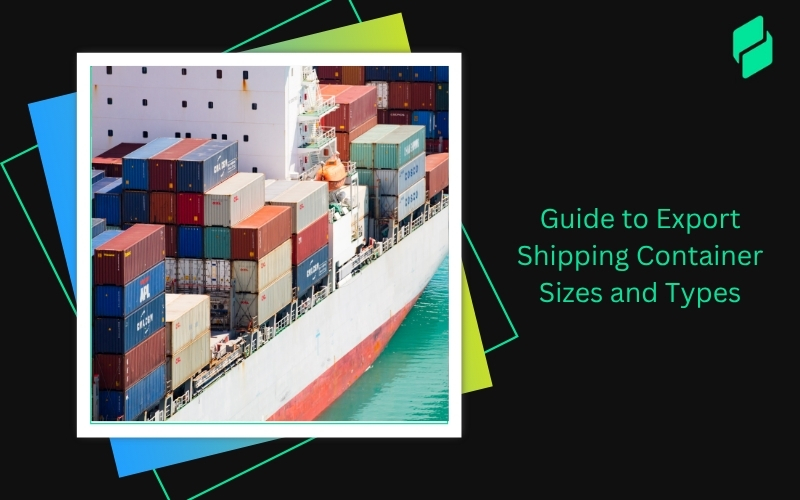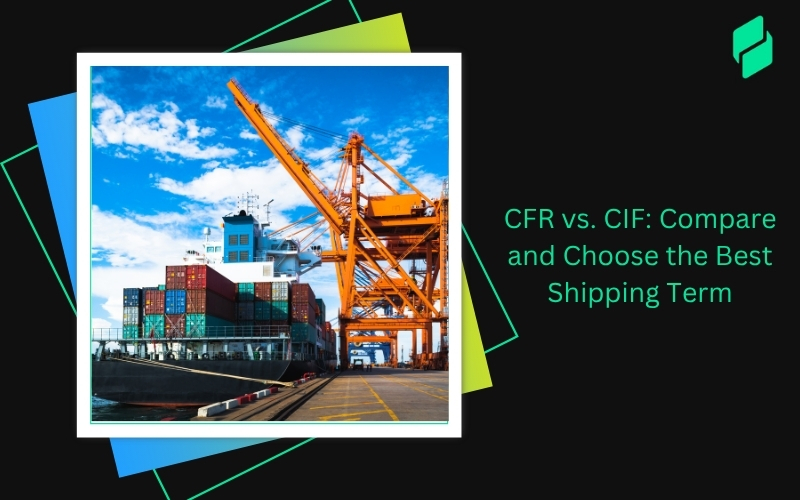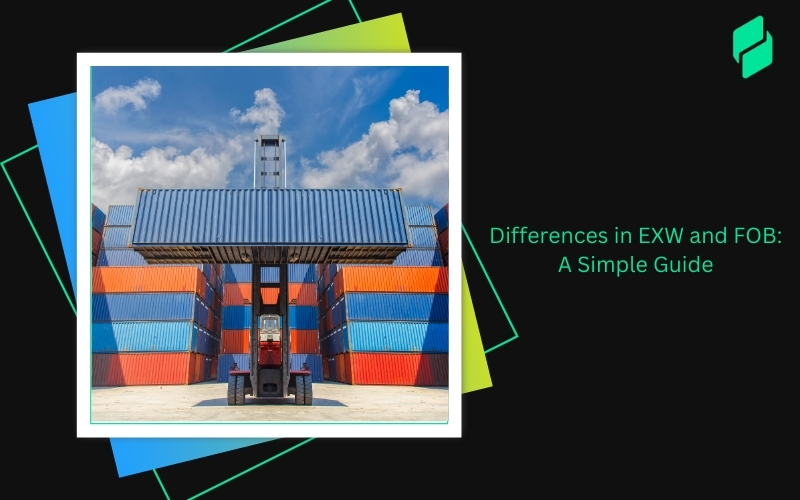Thinking of transforming your local business into an international sensation? Pack your bags (and your goods) because we're about to dive deep into the world of exporting from India - turbulence expected but success on the radar!
Optimize your business: use unlimited savings with Pazago fulfilled now!
Get Started ->Introduction on How To Select the Right Products To Export From India
Looking to jump into the export business? If so, it is important to select the right products to export from India. By carefully evaluating what people want, you will be able to put your hands on the products that already have a lot of demand. Which means, your chances of making it big will be huge too.
But evaluation is no easy feat to achieve. Why, you ask? Well, that’s because there’s not one but many parameters that need your attention when trying to determine which product is right for you!
To select right products to export from India, you need to:
- Tune into market trends and demand. By keeping an ear out for what's trending globally - be it tech gadgets, organic foods, or eco-friendly apparel – you can get get your business moving
- Understand there's also a no-fly list when it comes to exporting. We’re not kidding. For instance, endangered species and their products are a strict no, protecting biodiversity. Similarly, items of national heritage and antique value can't be exported, preserving India's rich culture
Having said that, in the financial year 2023, India's Export Contribution to GDP was more than 62 trillion rupees. This whopping amount clearly indicates that the scope of excelling in exporting business in India is very high as long as you sell the right products.
Eager to understand the global market's pulse so you can select the right products to export from India? If so, you’ve just hit a jackpot. We have specifically curated this guide for Indian traders looking to make it big in the export market. So, without further ado, let’s straightaway take you through all there is to know about selecting the right products to export from India.
7 Ways to Select Right Products to Export From India

1. Identify Unique and High-Demand Products
First things first, in order to select the right products to export from India, you need to comb relevant data through credible resources. And the ultimately mined results will give a list of products that have immense potential overseas.
After carefully scrutinizing many such credible resources and databases, we zeroed down some products that have high value overseas. Have a look!
- Textiles and Garments: India's textile exports are renowned for their quality and diversity. From luxurious silk to durable cotton, the sector has shown resilience and growth, contributing significantly to the country’s export revenue
- Jewelry and Precious Stones: With a rich heritage in jewelry making, India exported over US$37 billion worth of gems and jewelry in the fiscal year 2023
- Pharmaceuticals: The Indian drug and pharmaceutical sector has been a steady performer, with exports to the US reaching nearly ₹606 billion in 2023
- Agricultural Products: India's agricultural exports, including spices, tea, and rice, have found a place in kitchens around the world. The India Brand Equity Foundation (IBEF) states that agricultural exports from India stood at approximately US$ 19.74 billion in 2023, highlighting the sector's vitality
- Information Technology Services: India's IT and software services are not traditional exports but are significant contributors to the export economy. India’s Ministry of External Affairs highlighted that software exports from India grossed to $320 billion in year 2023
To stay on top of the latest market trends and demands for such products, consider using Pazago Insider. It’s designed to keep you informed with the most current global trade insights.
2. Leverage Historical Data for Future Success
Historical trade patterns provide a roadmap for predicting future trends. For example,
- The surge in pharmaceutical exports can be attributed to the global demand for affordable medicine, a niche that India has effectively capitalized on
- The textile and garment industry's adaptability to fashion trends and sustainability concerns has kept its products in high demand
- The steady increase in technology services exports reflects a global shift towards digitalization, a trend that's expected to continue
- The consistent demand for agricultural products determines the importance of food security and the global appreciation of India's diverse agricultural products
Also Read: List of Profitable and Best Products to Export From India
3. Analyze Product Demand and Supply in the Global Market
To select the right products to export from India, you need to develop an understanding of the global market. It's about knowing where your product stands in the game of demand and supply.
Conducting Detailed Research on Supply Chain and Demand of Chosen Products
Whether or not the product is right depends on whether or not you did your research properly. This means:
- Understanding the entire supply chain: where the raw materials come from, the manufacturing process, and how the product reaches the final consumer
- Analyzing data from credible sources: Using data, you can pinpoint sectors where India's export strengths lie. Focusing on these sectors and aligning with global market trends can pave the way for a successful and profitable export strategy
Also Read: Understanding The Freight Forwarding Process: Key Stages and Types
Assessing Product Potential in Target Countries
Next step to select the right products to export from India is to zoom in on specific markets for your product. This involves a consideration of:
- Market size and growth: Identify the size of the potential market in your target countries and the growth rate. Is the market expanding, and at what pace?
- Consumer preferences: Cultural nuances can significantly impact product demand. Understand the consumer preferences in your target markets. What features do they value? What are their purchasing habits?
- Know your competitors in the market: Analyzing them will give you insights into their strategies, strengths, and weaknesses, helping you carve out a niche
Impact of Shifting Spending Patterns on Product Demand
- Keep an eye on the broader economic indicators such as GDP growth, employment rates, and consumer confidence in your target markets
- Stay updated on technological trends that could affect your product category. Innovation can both create new markets for your product and render others obsolete
4. Select a Target Country Wisely
Once you've got a grasp on the global demand for your product, the next critical step to select the right products to export from India is choosing your target country or countries. This decision can make or break your export venture, so it’s essential to approach it with a strategic mindset.
Here’s how to ensure you're selecting a target country wisely, focusing on steady demand, understanding the economic and political climate, and navigating trade restrictions and policies.
- Choose what’s Steady Demand in Target Markets: You want to ensure there’s a consistent demand for your product in the chosen market
- Analyze the Economic and Political Climate of Potential Export Destinations: Always consider GDP growth rates, inflation rates, and other economic indicators to gauge the health and stability of the country you are planning to sell your products
- Choose Countries with Favorable Trade Restrictions and Policies: Favorable trade policies, bilateral agreements, and ease of doing business are key factors that can support your export endeavors. Countries that have free trade agreements with India may offer lower tariffs and easier market access for your products.
Imagine if you could quickly generate all critical trade documents and then review those documents and share them with all stakeholders on one single platform – wouldn’t that make exporting from India easy? That’s Pazago Portal for you.
5. Evaluate Product Profitability and Growth Prospects
Now, you're getting closer to making your export dream a reality, but before diving in, it's crucial to evaluate the profitability and growth prospects of your product. This step is all about ensuring your venture not only starts on the right foot but also has the legs to go the distance.
Let's break down how to assess your product's scalability, analyze costs and logistics for profitability, and evaluate its financial viability.
- Keep your finger on the pulse of regional trends affecting your product's demand. Is the market growing, and can your business scale up to meet increased demand? This will be very critical to select right products to export from India
- Consider how adaptable your product and supply chain are to changing market demands and trend
- Break down the cost of producing your product, including raw materials, labor, and overheads
- Evaluate the logistics costs, including shipping, handling, and insurance
- Be aware of the export taxes in India and any import duties and taxes in your target country
- Calculate your expected profit margin, considering all costs and the selling price
- Determine how much you need to sell to cover your costs and start making a profit
- Consider the risks involved, including market fluctuations, currency exchange rates, and potential barriers to entry in your target market
6. Understand Trade Regulations and Associated Costs
Researching Compliance, Trade Regulations, and Taxation Policies of the Destination Country
This next step in our guide to select the right products to export from India is very critical. Only when the products will comply with all international regulations will your business have a future! Here’s what you need to focus on:
- Product Standards and Certifications: Different countries have various standards and certifications for imported products. For example, electronics exported to the European Union must comply with CE marking requirements, indicating conformity with health, safety, and environmental protection standards
- Customs Duties and Import Taxes: Understanding the customs duties and import taxes in your destination country is crucial. These costs can significantly affect the final price of your product
- Sanitary and Phytosanitary Measures: If you're exporting food products or agricultural goods be aware of the sanitary and phytosanitary (SPS) measures that could apply. These are set to protect humans, animals, and plants from diseases, pests, or contaminants
Also Read: Guide to Importing and Exporting From USA For Small Indian Businesses
7. Calculate Costs Associated with the Export Process
Once you're clear on the regulatory requirements needed to select the right products to export from India, it’s time to calculate the costs involved in the export process. This includes:
- Pre-shipment Costs: This encompasses product development, meeting standards and certifications, packaging, and labeling
- Shipping and Logistics: The cost of shipping, including freight, insurance, and handling fees, is a major component of your export costs. Options vary from sea freight for larger volumes to air freight for faster delivery but at a higher cost
- Post-shipment Costs: After your product reaches its destination, there may be additional costs, such as storage, distribution, and marketing expenses, that need to be considered
Choosing the right shipping companies can affect your profitability margin when exporting from India significantly. This is where Pazago Fulfilled can help. We have contacts with the best shipping lines and we can secure the most competitive rates for you.
Navigating Competition Like a Pro: Learn How to Do It!
By now you are fully equipped with all the knowledge needed to select the right products to export from India. So, we came up with this bonus section of helping you understand how you can navigate through competition. It's not just about competing on price but about distinguishing your offerings in a way that resonates with your target audience.
Let's explore strategies for differentiating your products and effectively analyzing competition and price positioning to make informed decisions.
Differentiating Products to Avoid Price-Based Competition
Competing solely on price can be a race to the bottom where nobody wins — especially in markets saturated with similar goods. Here’s how you can avoid this trap:
- Value Addition: Elevate your product from a commodity to a brand. This could involve enhancing quality, incorporating innovative features, or offering superior customer service
- Customization: Tailor your products to meet specific needs or preferences in your target market
- Storytelling: Connect your product with a compelling story. This could be health benefits of your agricultural products or the technological innovation behind your IT services
Price Positioning for Better Decision-Making
Understanding who and what you’re competing against is very crucial for pricing and positioning your product. Here’s what you should consider:
- Competitor Analysis: Identify your main competitors in the target market and analyze their strategies, strengths, and weaknesses. Look at their pricing, marketing, distribution channels, and product offerings. This is immensely critical to select right products to export from India
- Market Segmentation: Segment your target market based on demographics, psychographics, or behavior. This will help you identify niches that may be underserved by competitors or where you can offer a unique value proposition
- Price Positioning: Based on your analysis, position your product's price to match its value proposition. If you're offering a premium product, ensure that the quality and brand experience justify a higher price point
Pro Tips and Warnings for Navigating the Export Landscape
Armed with all the knowledge needed to select the right products to export from India, you must be keen to take on the challenge head on now. Just so you do not go wrong, we have also created this section on pro tips and certain warnings you should heed to steer your export venture towards success and sustainability. Have a look!
- Balancing Uniqueness with Universal Appeal
The global marketplace is vast and varied, making it imperative for your product to shine with a unique light. Whether it’s the story behind its creation, its exceptional quality, or a unique feature that stands out, identifying and promoting your USP is critical.
- Prioritizing Quality Over Trends
The allure of jumping on the latest trend might be tempting, but real sustainability lies in timeless appeal. Focus on delivering quality so even after a current trend fads, your product remains relevant and sought-after.
- Strengthening Your Supply Chain
Dependence on a single supplier is a vulnerability you cannot afford. By cultivating relationships with alternative suppliers, you protect your business from unforeseen disruptions, ensuring a consistent product flow to your international customers.
Conclusion
Learning how to select the right products to export from India requires more than just eagerness to make it big! It's about understanding the roots of the global marketplace, identifying and adhering to international standards, and continuously strategizing to stay ahead of the curve.
The journey of exporting from India is already crammed with different challenges. You don’t have to deal with everything alone. You can count on Pazago – book a free demo call with our experts today. We will take care of essential things like handling insurance for your goods, connecting you with best shipping lines, managing all critical trade documents, and offering you an all-in-one dashboard where you can track your products in real time.


.png)








